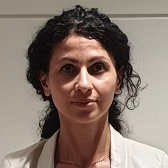Applications and Developments in Building Information Modeling (BIM) in Construction
A special issue of Buildings (ISSN 2075-5309). This special issue belongs to the section "Construction Management, and Computers & Digitization".
Deadline for manuscript submissions: closed (20 June 2024) | Viewed by 6565
Special Issue Editors
Interests: BIM; simulation models for sustainability; building use simulation; building performance engineering
Interests: sustainable rehabilitation; historical buildings; renewable energy; green infrastructures; construction site management; recycled and smart materials
Special Issues, Collections and Topics in MDPI journals
Special Issue Information
Dear Colleagues,
Digital and information approaches are radically transforming the way construction processes are performed and managed, deeply impacting productivity, sustainability and the safety of workers. The construction industry is looking with strong interest at the novelty provided by both new paradigms and consolidated digital concepts that are still under implementation in this relevant sector. Furthermore, with the increasing demand for more sustainable construction processes and infrastructures, building information modeling and other approaches can provide a relevant way to represent and manage information for better estimations of construction performances and impacts.
In this evolving scenario, this Special Issue “Applications and Developments in Building Information Modeling (BIM) in Construction” aims to collect recent advancements regarding the contribution of digital techniques and methods to the planning, management and optimization of construction sites and operations, for the realization or renovation of buildings and infrastructures. It welcomes high-quality original research papers presenting digital applications in the construction field including (but not limited to) digital twin, BIM, simulation models, construction planning, computer vision, machine learning, digital approaches to sustainability and gamification models and approaches.
Dr. Davide Simeone
Prof. Dr. Marianna Rotilio
Guest Editors
Manuscript Submission Information
Manuscripts should be submitted online at www.mdpi.com by registering and logging in to this website. Once you are registered, click here to go to the submission form. Manuscripts can be submitted until the deadline. All submissions that pass pre-check are peer-reviewed. Accepted papers will be published continuously in the journal (as soon as accepted) and will be listed together on the special issue website. Research articles, review articles as well as short communications are invited. For planned papers, a title and short abstract (about 100 words) can be sent to the Editorial Office for announcement on this website.
Submitted manuscripts should not have been published previously, nor be under consideration for publication elsewhere (except conference proceedings papers). All manuscripts are thoroughly refereed through a single-blind peer-review process. A guide for authors and other relevant information for submission of manuscripts is available on the Instructions for Authors page. Buildings is an international peer-reviewed open access monthly journal published by MDPI.
Please visit the Instructions for Authors page before submitting a manuscript. The Article Processing Charge (APC) for publication in this open access journal is 2600 CHF (Swiss Francs). Submitted papers should be well formatted and use good English. Authors may use MDPI's English editing service prior to publication or during author revisions.
Keywords
- building information modeling
- digital twin
- construction planning
- construction health and safety
- simulation
- sustainability
- artificial intelligence
- lean construction
Benefits of Publishing in a Special Issue
- Ease of navigation: Grouping papers by topic helps scholars navigate broad scope journals more efficiently.
- Greater discoverability: Special Issues support the reach and impact of scientific research. Articles in Special Issues are more discoverable and cited more frequently.
- Expansion of research network: Special Issues facilitate connections among authors, fostering scientific collaborations.
- External promotion: Articles in Special Issues are often promoted through the journal's social media, increasing their visibility.
- e-Book format: Special Issues with more than 10 articles can be published as dedicated e-books, ensuring wide and rapid dissemination.
Further information on MDPI's Special Issue polices can be found here.






